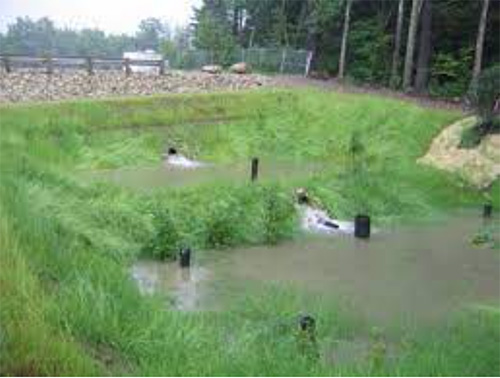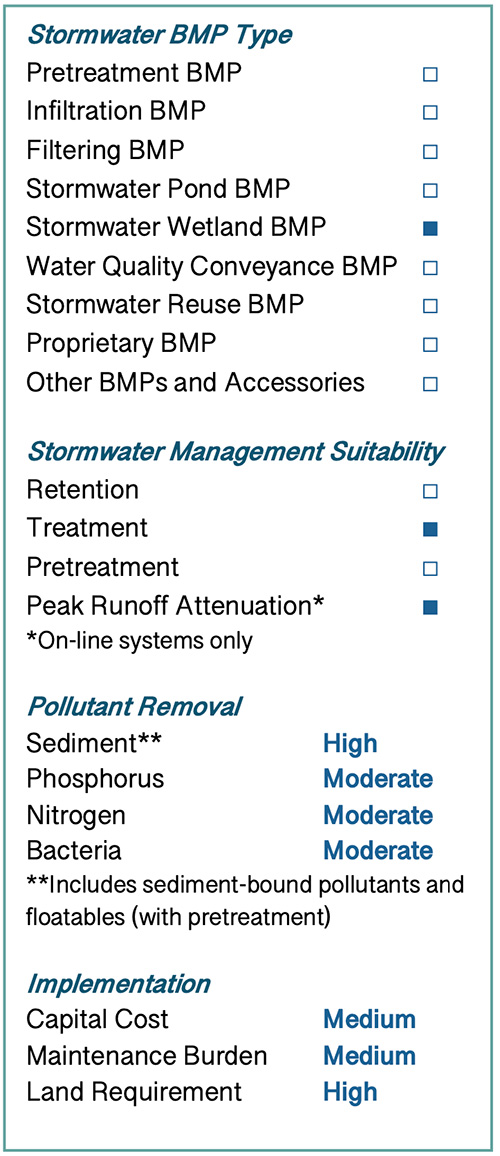Stormwater wetlands are man-made wetland systems that incorporate marsh areas and permanent pools to provide treatment and attenuation of stormwater flows. Stormwater wetlands differ from stormwater ponds in that wetland vegetation is a major element of the overall treatment mechanism as opposed to a supplementary component. This section addresses four types of stormwater wetlands:
- Subsurface Gravel Wetland
- Shallow Wetland
- Extended Detention Shallow Wetland
- Pond/Wetland System
While stormwater wetlands can provide some of the ecological benefits associated with natural wetlands, these benefits are secondary to the function of the system to treat stormwater. Particulate and soluble pollutants are removed as stormwater runoff flows through the open marsh system. The primary pollutant removal mechanisms include sedimentation and filtration/uptake by wetland vegetation.
Subsurface gravel wetlands are a more recent stormwater wetland design variant that combines a surface marsh and subsurface gravel bed. Pollutants are removed through settling and filtration/uptake by wetland vegetation and by the process of denitrification in the subsurface gravel bed. Subsurface gravel wetlands are particularly effective for nitrogen removal.
The key to maximizing pollutant removal effectiveness in stormwater wetlands is maintaining wet conditions adequate to support wetland vegetation and saturated conditions in the subsurface gravel bed of subsurface gravel wetlands. Stormwater wetlands should either intercept the groundwater table or should be lined with an impermeable liner if located in permeable soils and should have a watershed large enough to supply storm flows that will maintain wetness even during dry periods.
Stormwater wetland systems are designed to operate on the plug flow principle where the “new” polluted incoming runoff displaces the “old” treated water held in the system from the previous storm event. This is accomplished by maximizing length versus width ratios and/or by creating distinct cells along the treatment path. Stormwater wetlands are designed to treat the Water Quality Volume (WQV). When designed in an on-line configuration, stormwater wetlands can also be sized to treat and provide peak runoff attenuation for storms larger than the water quality storm event.
Stormwater wetlands do not provide sufficient retention or runoff volume reduction through infiltration or other processes and therefore cannot be used to meet the Standard 1 retention performance criterion of this Manual.

